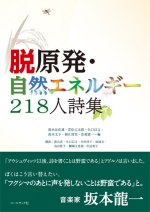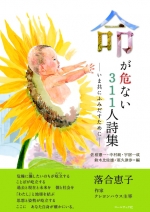verse, prose, and translation
Delfini Workshop
高木仁三郎の言葉(37)

高木仁三郎の言葉 #39
技術システムとしての原発
原子力発電ないし原子力発電所(以下原発)と人間の間の問題を考えるにあたって、まずこの工学システムの基本的性格をとらえておく必要があるだろう。
原発は、核燃料(通常はウラン)の核分裂反応によって生じる熱を利用して蒸気をつくり、タービン発電機を動かして発電するシステムであるが、その最大の問題はなんといっても、ウランの燃焼にともなって生じる核分裂生成物その他の放射性物質が強い毒性をもつことである。これらの放射性物質はその発する放射線によって、急性(死亡、火傷、下痢、白血球の減少など)および遅発性(がん、遺伝障害、加齢、不妊など)の影響を人間に与える。特に問題は、発がんなどの遅(晩)発性発生障害で、これは大事故による一挙的な放射能放出、といった極端なことがなくても、原子力施設の日常的な運転に伴う微量の排出放射能に曝される住民や放射線作業に従事する労働者の間にも起こりえる。
高木仁三郎セレクション p.77
The words of Jinzaburoh TAKAGI(1938-2000), people's scientist against nuclear power#39
The nuclear power plant as a technological system
It seems to be necessary to grasp the fundamental nature of its engineering system in considering the relationship between nuclear power or a nuclear power plant (both a nuclear plant below) and human beings.
The nuclear plant is a system which generates power through a turbine generator using steam made from heat coming from fission reaction of nuclear fuel (normally uranium). The most important problem is after all that radioactive materials, including fission product and others, have strong toxicity from uranium burning. These radioactive materials giving off radiation cause acute disorders (death, burn injury, diarrhea, decrease of white blood cells and so forth) and delayed disorder (cancer, genetic disorder, aging and atocia and so on). In particular, the matter is delayed disorder, including cancer, which could arise among inhabitants exposed to low level radioactivity from its everyday operation near them and workers engaging to radiological work in the plant without a severe accident which gives off massive radioactivity at a burst.
Jinzaburoh TAKAGI selection p.77
コメント ( 0 ) | Trackback ( 0 )










